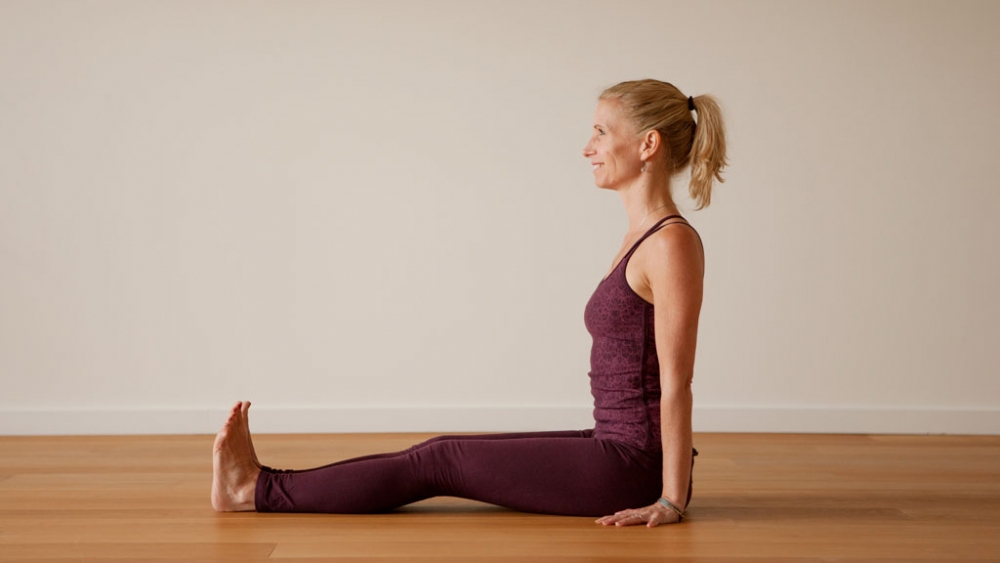…nothing was happening, I couldn’t feel anything ‘working’. Admittedly there were a couple of poses that seemed like this when I first started practising yoga years ago, but while I managed to figure out that Savasana wasn’t just Have a nice lie-down pose, I didn’t really give Dandasana a second thought, I was just…sitting there.
Recently, though, I’ve been spending more and more time practising poor, forgotten Dandasana and thought it was time to sing its praises!
Why do I love it so?
1. The more simple the pose, the less noise there is
Yoga used to be my only form of exercise – that was great but meant I tended to choose classes based on how sweaty I’d get! These days I mix it up with other sports so the pressure is off yoga to provide my ‘workout fix’. I’m drawn to simpler poses like Dandasana where I can focus on my breath and bandhas and ask questions like – what happens in the rest of my body if I push through the balls of my feet, or press down with my heels? Am I steady, stable but also at ease? Or am I gripping on for dear life and tensed up in the pose?
- I’m learning a lot from going back to basics – I recommend going back through one of our beginners‘ programs or classes every now and then.
2. Press reset
That said, I still love a good strong class! In a physically challenging class, Dandasana (like Tadasana) is like pressing pause and reset. It allows you to process what you’ve just been doing, neutralise in between stronger poses and to take a breather!
- Read a step by step guide to Dandasana
3. Rise up through your spine
A common instruction you might hear for Dandasana is to lift through the crown of the head to sit up straight. But if we overdo this we become rigid or flatten out the natural curves of the spine. One of the most helpful points I’ve heard on this was from Aki Omori’s Forgotten rise in spine class where Aki talks about lifting through the front of the spine instead. Even the concept of my spine having a ‘front’ I could visualise was a real lightbulb moment for me and I think about it when I’m in Dandasana especially.
- I can’t do Aki’s class justice here – Ekhartyogis: try the class if you haven’t, it’s great!Forgotten rise in spine
4. Focus on your back
This is the main reason why Dandasana is my new friend. Earlier this year I was diagnosed with a “winged scapula”. If you’ve not heard that term before (I hadn’t) the muscles between and just under the shoulder blade (the rhomboids, serratus anterior and lower trapezius) weren’t activating to hold the shoulder blade snugly in place against my back – so the inner edge of it winged out.
Thanks to a wonderful physiotherapist I learnt different exercises to wake these muscles up, remind them what their job was and to take the pressure off my upper trapezius which was over-compensating. I realised that I was focusing much more on the front of my body in exercise and daily life – as most of us do – thinking that aches and pains were due to tightness in my chest and not also a lack of stability in areas of my back.
Dandasana is a pose where I can put all that I’ve learnt from my physio into practice. I scan my shoulders and back and feel for myself whether I have slipped back into old postural habits. Dandasana is the time where I can tell whether I’ve been doing my exercises or not!
So, far from being a ‘pointless’ pose, Dandasana is now my ‘go to’ pose to help me figure on what’s really going on in my body. I guess there must be something ‘working’ in it after all!

